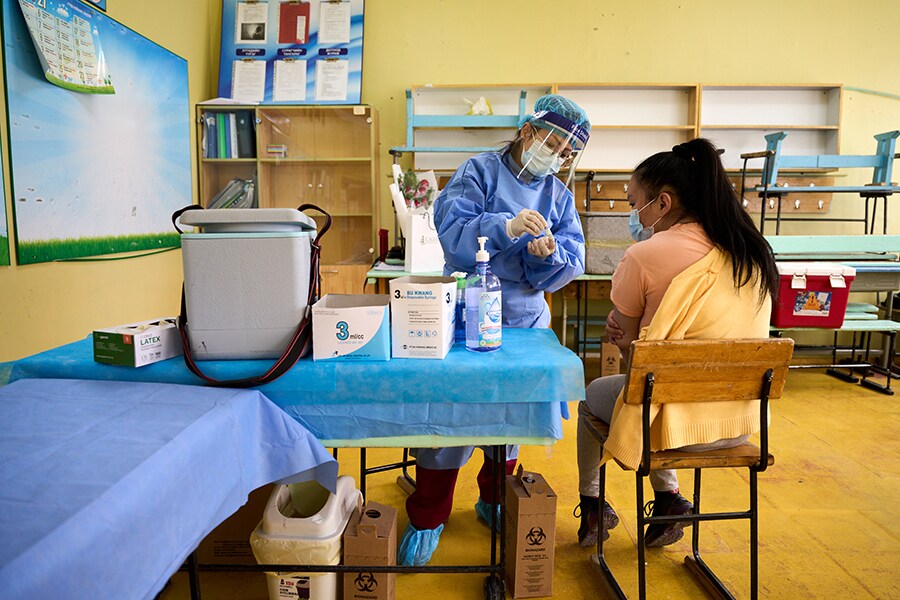
China returns to its strict Covid-19 limits to fight a new outbreak
Authorities have blamed the delta variant, which has caused widespread loss of life in India
 A nurse administers a Sinopharm vaccine in Ulaanbaatar, Mongolia, May 12, 2021. Mongolia has had large numbers of coronavirus infections despite vaccinating half of its population. Image: Khasar Sandag/The New York Times
A nurse administers a Sinopharm vaccine in Ulaanbaatar, Mongolia, May 12, 2021. Mongolia has had large numbers of coronavirus infections despite vaccinating half of its population. Image: Khasar Sandag/The New York Times
BEIJING — Neighborhoods under strict lockdown. Thousands quarantined. Millions tested in mere days. Overseas arrivals locked up for weeks and sometimes months.
China has followed variations of that formula for dealing with the coronavirus for more than a year — and a new outbreak suggests that they could be part of Chinese life for some time to come.
China appeared to get the coronavirus under control nearly a year ago. But hundreds of millions of Chinese people remain unvaccinated. New variants of the coronavirus have appeared, and questions remain about whether China’s self-made vaccines can stop them.
The latest cases have been found in Guangzhou, capital of the southern province of Guangdong. Authorities have blamed the delta variant, which has caused widespread loss of life in India.
The city tested practically its entire population of 18.7 million between Sunday and Tuesday, some of them for the second time. It has also put neighborhoods with a total of more than 180,000 residents into total lockdown, with practically no one allowed out except to go to medical testing.
©2019 New York Times News Service




